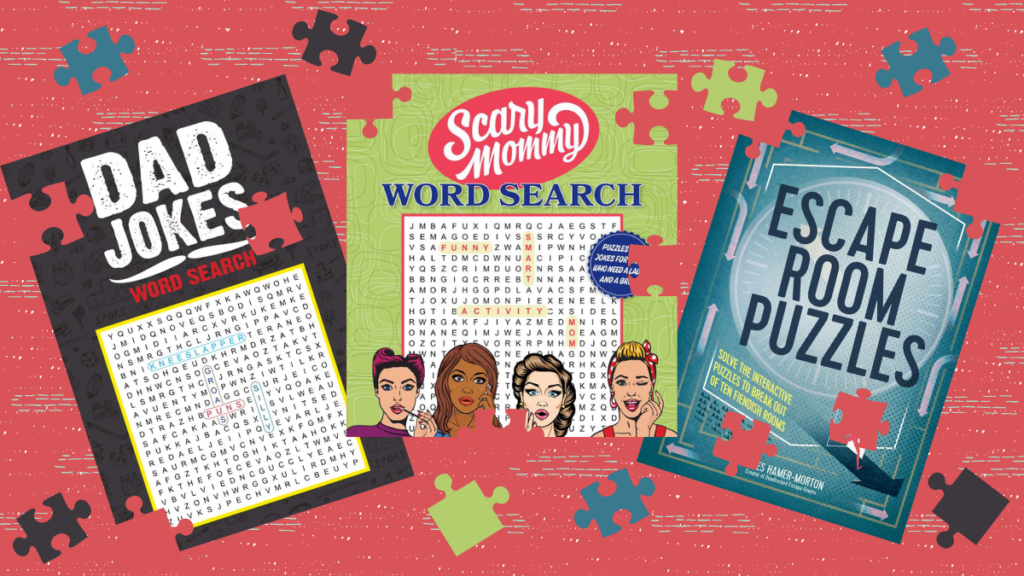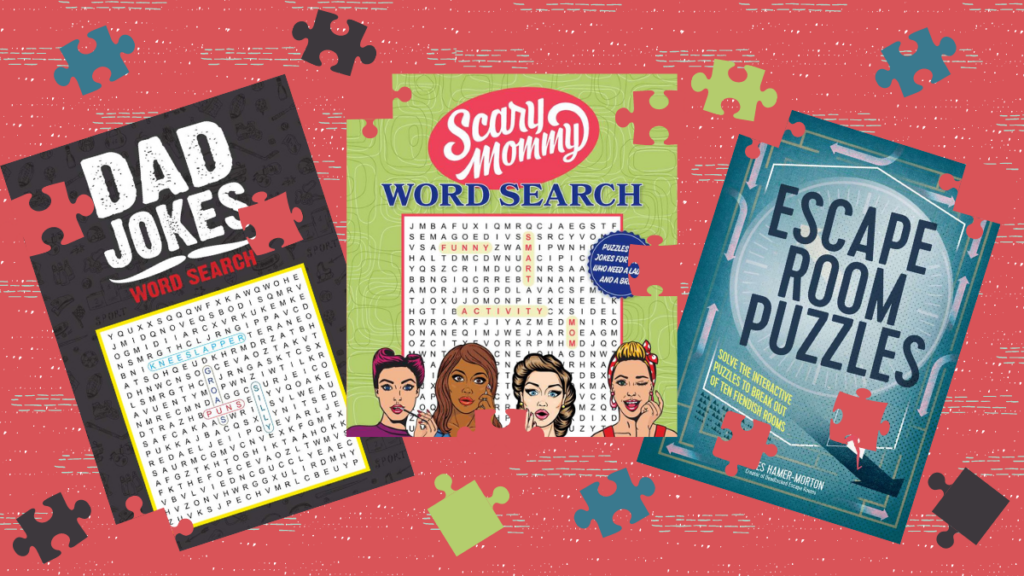
Have you figured it out yet? Happy National Puzzle Month! Puzzle solved! If that’s not enough puzzle for you, Portable Press has more to choose from. Check this link for more puzzling books, including Scary Mommy Word Search, Escape Room Puzzles, and more.
Or read on to enjoy some not-so-puzzling stories about the origins of popular puzzles.
Game: Wordle
Objective: You get five guesses to guess a five-letter word; the game tells the player when they landed a correct letter and/or correct placement of a letter.
Story: Welsh media artist Josh Wardle came up with Wordle (a wordplay game whose name is a play on the creator’s last name) in 2013. He showed it to his friends, who didn’t think it was all that fun or interesting. But during the COVID-19 lockdowns of 2020, Wardle revisited and reworked the game as an activity for himself and his puzzle-loving partner, Palak Shah. Shah narrowed down the programmed list of possible words down to 2,500 common ones and then the couple shared it with friends and relatives via a text messaging app, and that early audience of 90 had expanded into the hundreds of thousands by New Year’s Eve of 2021.
Game: Hangman
Objective: One player devises a common word or phrase and writes out the number of letters contained in each word, represented by dashes. The other player guesses what letters are in it; each wrong answer prompts the first player to draw another body part on a stick figure in a gallows. Player two wins if they figure out the word before the hangman is completed.
Story: Variations of word-guessing games have been played in many languages for centuries, but the first time an activity of this nature was mentioned in print was in a book of games for kids by Alice Gomme in 1894. Called “Birds, Beasts, and Fishes,” multiple players competed to see who could guess a mystery phrase in the fewest attempts. Eight years later, the society page in the Philadelphia Inqurier mentioned a hot new party game at a turn of the century fad called “white cap parties.” Guests would arrive in white caps and wear masks and pretend to be executioners. Games like Gomme’s were played, but with the added and pertinent addition of the hanging man.
Game: Sudoku
Objective: Players are presented with a grid of nine boxes consisting of nine boxes measuring 3×3. Each digit, one through nine, must be placed in each of the nine boxes so that every number appears once per line, column, and box.
Story: In 1783, a mathematician from Switzerland named Leonhard Euler created the Latin Square, essentially the exact same thing as what later be called Sudoku. In the late 1970s, a puzzle magazine publisher discovered the Latin Square, by then an obscurity, and printed new ones under the name Number Squares. Maki Kaji, president of Japanese puzzle publisher Nikoli, adapted the game further and gave it a new name for Japanese gamers: Sudoku, a portmanteau of the words meaning “number” and “single.” New Zealand puzzler Wayne Gould discovered Sudoku on a trip to Japan and in 2004, pitched them to The Times of London, where they spread in popularity in the English-speaking world.
At Portable Press, every month is National Puzzle Month. We’ve got plenty of intriguing, challenging, and fun puzzle books ready to go, including , Dad Jokes Word Search, Large Print Word Search, and lots more!








